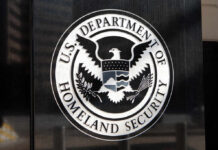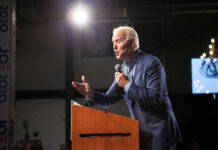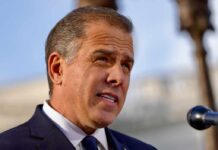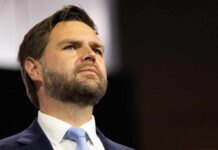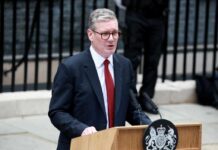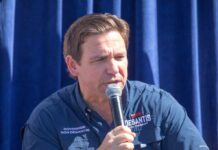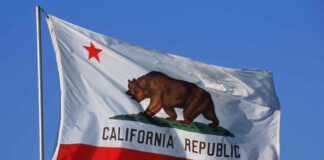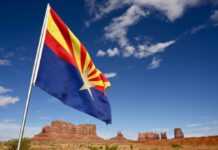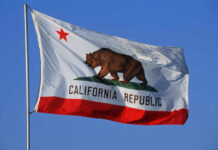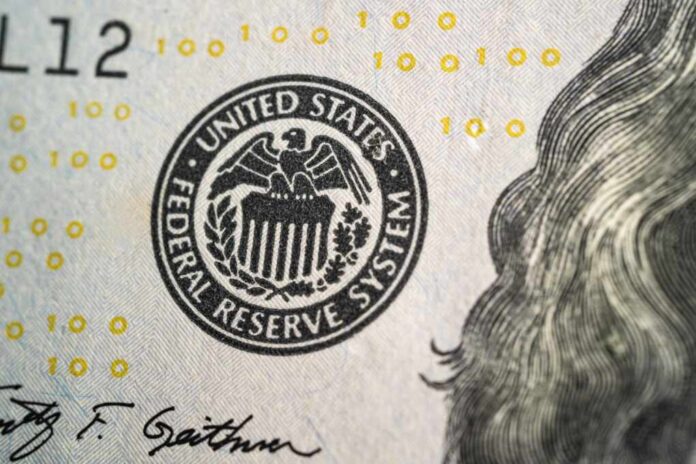
Trump blasts Fed Chair Powell as a “FOOL” after central bank stalls on interest rate cuts despite falling inflation and economic warning signs.
At a Glance
- President Trump criticized Federal Reserve Chairman Jerome Powell on Truth Social, calling him a “fool” who “doesn’t have a clue”
- The Federal Reserve kept benchmark interest rates unchanged at 4.25% to 4.5% despite Trump’s calls for cuts
- Trump cited falling oil, energy, and grocery costs as evidence that “virtually NO INFLATION” exists to justify the Fed’s stance
- Powell maintains that Trump’s criticism doesn’t affect Fed decisions, which are based solely on economic data
- The Fed warned of increased risks to both inflation control and unemployment goals, signaling economic uncertainty
When Common Sense Meets Monetary Policy
The gloves are off in the latest round between President Trump and Federal Reserve Chairman Jerome Powell. After the Fed announced it would keep interest rates steady at their current high level of 4.25% to 4.5%, Trump took to Truth Social to express what millions of Americans are thinking. Powell’s refusal to cut rates despite clear economic indicators has now earned him a new Trump-bestowed nickname: “Too Late” Jerome Powell. The central bank’s decision comes at a time when Americans continue struggling with the fallout from years of reckless Biden-era spending that triggered inflation that’s still lingering in the system despite recent improvements.
Trump didn’t mince words in his assessment of Powell’s leadership at the Fed. “‘Too Late’ Jerome Powell is a FOOL, who doesn’t have a clue, Other than that, I like him very much!” Trump wrote. His frustration highlights the disconnect between Wall Street’s monetary wizards and Main Street’s economic reality. While Powell and his Fed colleagues play academic games with interest rates, everyday Americans face the real-world consequences of these decisions in their bank accounts, mortgages, and retirement savings. Trump correctly pointed out that the economic indicators simply don’t support the Fed’s hesitancy to lower rates.
The Economic Reality Powell Ignores
The frustrating part of this entire Federal Reserve drama is how obvious the situation appears to anyone with business sense. Trump highlighted the key indicators that should be driving Fed policy: “Oil and Energy way down, almost all costs (groceries and ‘eggs’) down, virtually NO INFLATION, Tariff Money Pouring Into the U.S. — THE EXACT OPPOSITE OF ‘TOO LATE!'” These aren’t abstract concepts but real economic metrics that show inflation is cooling significantly. Yet Powell, entrenched in his ivory tower of economic theory, refuses to acknowledge these realities with appropriate policy adjustments.
“‘Too Late’ Jerome Powell is a FOOL, who doesn’t have a clue, Other than that, I like him very much! Oil and Energy way down, almost all costs (groceries and ‘eggs’) down, virtually NO INFLATION, Tariff Money Pouring Into the U.S. — THE EXACT OPPOSITE OF ‘TOO LATE!’ ENJOY!” – President Donald Trump.
Powell’s inflexibility appears particularly stubborn when considering the Federal Open Market Committee’s own admission of “increased uncertainty in the economic outlook.” The committee even acknowledged elevated risks to both their employment and inflation goals. Translation: They know their tight money policy might be choking the economy, but they’re still refusing to change course. This isn’t cautious stewardship; it’s bureaucratic paralysis that threatens American prosperity. The Fed seems more concerned with defending its previous decisions than responding to changing economic conditions.
Powell’s Bureaucratic Shield
When pressed about Trump’s criticism, Powell retreated behind the familiar shield of bureaucratic independence. “We’re always going to do the same thing, which is we’re going to use our tools to foster maximum employment and price stability for the benefit of the American people,” Powell stated, asserting that political comments “really doesn’t affect either our job or the way we do it.” But this supposed independence rings hollow when the Fed appears to be making decisions based more on institutional inertia than economic reality. Powell’s insistence that they only consider “economic data, the outlook, the balance of risks” would be more convincing if their actions matched the data.
“We’re always going to do the same thing, which is we’re going to use our tools to foster maximum employment and price stability for the benefit of the American people, We’re always going to consider only the economic data, the outlook, the balance of risks. And that’s it. That’s all we’re going to consider. So it really doesn’t affect either our job or the way we do it.” – Jerome Powell.
This standoff between Trump and Powell represents more than just a personality conflict. It embodies two fundamentally different approaches to economic management. Trump, the businessman and builder, sees interest rates as practical tools that should respond quickly to economic conditions. Powell, representing the establishment banking system, moves with glacial caution that often seems disconnected from economic reality. As Americans face the consequences of these decisions in their daily financial lives, Trump’s frustration resonates because it reflects a common-sense understanding that when inflation is cooling, strangling the economy with high interest rates defies logic. And that’s something any fool should be able to see.


